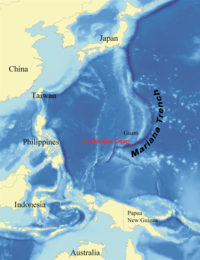
Photo from wikipedia
OBJECTIVES Visit-to-visit blood pressure (BP) variability is a risk factor for cardiovascular disease and cognitive decline. Our aim was to assess the association between visit-to-visit BP variability and progression of… Click to show full abstract
OBJECTIVES Visit-to-visit blood pressure (BP) variability is a risk factor for cardiovascular disease and cognitive decline. Our aim was to assess the association between visit-to-visit BP variability and progression of white matter hyperintensities (WMH). DESIGN Post-hoc analysis in the magnetic resonance imaging substudy of the randomized controlled trial prevention of dementia by intensive vascular care. SETTING AND PARTICIPANTS Community-dwelling people age 70-78 years with hypertension. METHODS Participants had 3 to 5 twice yearly BP measurements and 2 magnetic resonance imaging scans at 3 and 6 years follow-up. We used linear regression adjusted for age, sex, WMH at scan 1, (change in) total brain volume, and cardiovascular risk factors. RESULTS Among the 122 participants, there was a modest association between visit-to-visit systolic BP variability and WMH progression [beta = 0.03 mL/y per point increase in variability, 95% confidence interval (CI) 0.00-0.05, P = .058]. Additional adjustment for slope in systolic BP reduced the associated P value to .043. Visit-to-visit diastolic BP variability was not associated with WMH progression (beta = 0.01 mL/y, 95% CI -0.02 to 0.03, P = .68). Visit-to-visit pulse pressure variability was associated with WMH progression (beta 0.03 mL/y, 95% CI 0.01-0.05, P < .01). CONCLUSIONS Higher visit-to-visit systolic BP and pulse pressure variability is associated with more progression of WMH among people age 70-78 years with hypertension. IMPLICATIONS Interventions to reduce visit-to-visit BP variability may be most effective in people with low WMH burden.
Journal Title: Journal of the American Medical Directors Association
Year Published: 2019
Link to full text (if available)
Share on Social Media: Sign Up to like & get
recommendations!